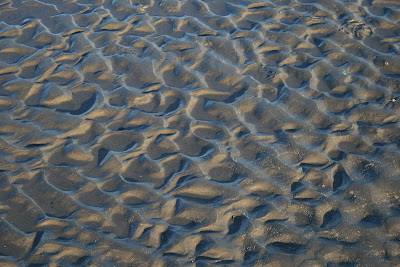We climbed The Moose today--the 4,802-foot Mt. Moosilauke--after deciding against an attempt of Mt. Washington. The weather forecast was a bit too cold and windy for the high peaks. The approximately 8-mile round trip up the Glencliff and Carriage Road Trails to the top of Moosilauke was a great alternative. Two to three inches of fresh snow had fallen overnight, providing a nice coating over hard packed snow and ice. We wore snowshoes all the way, except just at the bottom on our descent. By then the fresh snow had melted and the trail was bare. Here is a morning and afternoon shot of the Glencliff Trail at the edge of the field.
The Glencliff Trail is a favorite hike as it passes through a stand of paper birch then rises into a northern hardwood forest studded with huge, old, gnarly yellow birches, before entering spruce and fir country.
The Glencliff Trail climbs steadily and then much more steeply toward the top. The final stretch passes a talus slope to the right. The snow-covered spruce and fir were beautiful as I paused to catch my breath.
Before we left the wind-protected trail and emerged above treeline we paused for nourishment and to add layers. A few people coming down from the top said it was pretty windy up there. Although not a perfectly clear day, the views were plenty fine, including a clear view of the summit as we ascended.
Srini and Kodi led, following the cairns up the wind-swept ridge.
It was windy at the top, but we had on plenty of gear, so we wandered around the broad, rocky summit to see the views in every direction.
John, one of our hiking companions, studied the mountains in the distance.
Our friend Kevin gazed out from the summit, enjoying the day on top of one of his favorite mountains.
Kodi and I shared a hug before beginning the descent.
After taking in the last of the sweeping views from the summit we descended the way we came. The cairns were clearly visible and oh so helpful above treeline in winter.The south summit was visible in the distance. We did take in that peak, which required a short 0.1 mile (seemed like more) snowshoe hike up to the top.
The short trek to South Summit, which itself is 4,523-feet, is worth the extra few minutes. It offers some interesting views back toward Moosilauke and down into the valley below.
This view from the South Summit reveals a series of patch cuts in the forest below.
We crossed paths with fewer than two dozen people today. We expected more on this popular peak, although perhaps the wind kept them away. We had Glencliff Trail almost entirely to ourselves, except for the small woodland creatures. It was a fine day in the woods and in the wind.























































